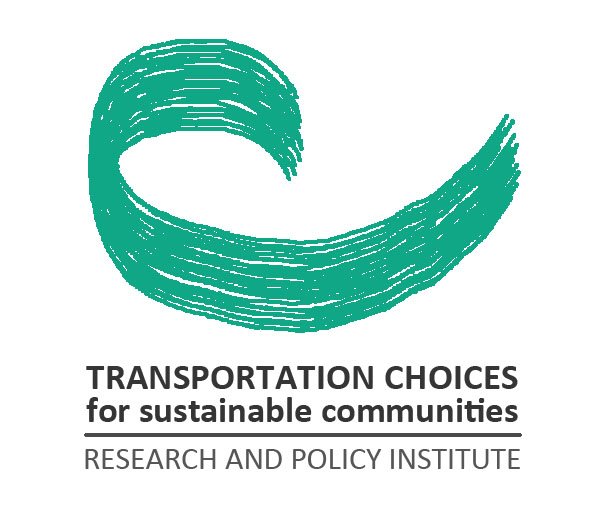From Complete Streets to Complete Freeways
March 2, 2014, Posted in Blog
Joseph Kott, PhD, AICP, PTP
Principal and Vice President, Transportation Choices for Sustainable Communities Research and Policy Institute
The “complete streets” movement has made sustainable transportation a tangible goal in many of America’s cities and towns. Streets are no longer seen as reserved for cars only or mostly, but as both links and places for people, venues for multimodal transportation. Yet the most visible of all the symbols of urban transport and automobile dependence, the urban freeway, remains the domain of the private motor vehicle. In 2011, there were 477 billion motor vehicle miles driven on America’s urban freeways.[1] While the approximately 93,000 lane mile of urban freeways represent less that 4% of the nation’s roadway miles, these highways carry nearly one-fifth on the country’s motor vehicle miles of travel.[2]
More often than not, the nearly 100,000 lane-miles of freeway are occupied by solo-occupant vehicles. The urban freeway section in San Mateo County, California, roughly midway between San Francisco and San Jose, illustrates this point. A recent study of that portion of Bay Area freeway that I co-authored with Jeff Hobson for the Bay Area transportation and land use reform group, Transform, shows that the typical vehicle occupancy for vehicles travelling along Highway 101 in San Mateo County is a mere 1.3 people per vehicle.[3]
Yet urban freeway corridors often have the potential to carry many more people without adding any lanes. In the same Transform study, we modeled as a scenario planning exercise the effect of robust corridor-wide transportation demand management efforts and augmented bus and vanpool services. These initiatives would be funded through fees paid by solo occupant vehicles to use prospective high-occupancy vehicle toll lanes (HOT). The HOT lanes would be created though conversion of two of the freeways existing general purpose lanes, one in each direction. The result was that vehicle occupancy rose by nearly 27%, from 1.3 to 1.77 persons per vehicle. The number of people, in contrast to vehicles, accommodated on the freeway rose by one-half and the percentage of solo-occupant vehicles declined from 61% to 43%. These effects all came without adding any new lanes to Highway 101.
Like street cross-sections, freeway rights of way can become a continuum of multimodal spaces. During short stay residencies as part of my PhD program in Perth, Western Australia, I was struck by the efficient use of freeway right of way on the Kwinana Freeway, a 72-kilometer section of highway from Perth south to the Indian Ocean town of Mandurah.[4] The Kwinana Freeway has commuter rail lines in both directions in the center of the right-of-way, wide pedestrian and bicycle paths along each side connected by pedestrian and bicycle overcrossings, and motor vehicle lane in between the rail and the non-motorized travel space. The center portion of the right-of-way was first retrofit as two lanes designed to give priority to buses, afterward this space was dedicated to exclusive commuter rail operation. Perth’s Kwinana Freeway is a “complete freeway” and a model for metropolitan areas in all the world’s highly motorized nations that endeavor to move toward more sustainable transport systems.
In the long term, our urban freeway networks may prove themselves to be placeholders or transportation ”landbanks”, the latter a term that has been used by Professor Robert Cervero of the University of California, Berkeley to describe the large surface parking lots that often surround suburban train stations. As such, our existing freeways may be way stations on the road to sustainable, low-carbon metropolitan transport. Our typical future urban freeway rights-of-way cross-sections might include, like the Kwinama Freeway does at present, long sections dedicated to non-motorized travel, a wide swath reserved for passenger rail, and the remaining space used for motor vehicle travel. Passenger stations along the freeway rail lines will be urban villages, each a complete community of mixed land uses and multimodal transport systems.
Freeways of the future may be transformed from being facilitators of automobile dependence to the spines along which metropolitan areas will grow in more sustainable forms than they had during the decades of Automobile City era. In this sense, our metropolitan freeway networks could foster at a larger geographic scale the sustainable, walkable streetcar neighborhoods and suburbs that graced America’s metropolitan geography before the post-World war II decades of suburban sprawl and car dependence.
Whether or not this happens will depend on vision and political will of the kind shown by the Perth metropolitan area in the transformation of the Kwinama Freeway. Or of the kid that the policymakers of San Mateo County, California may choose to show if they begin the transformation of the Highway 101 corridor away from domination by solo-occupant vehicles and toward moving people rather than just cars.

